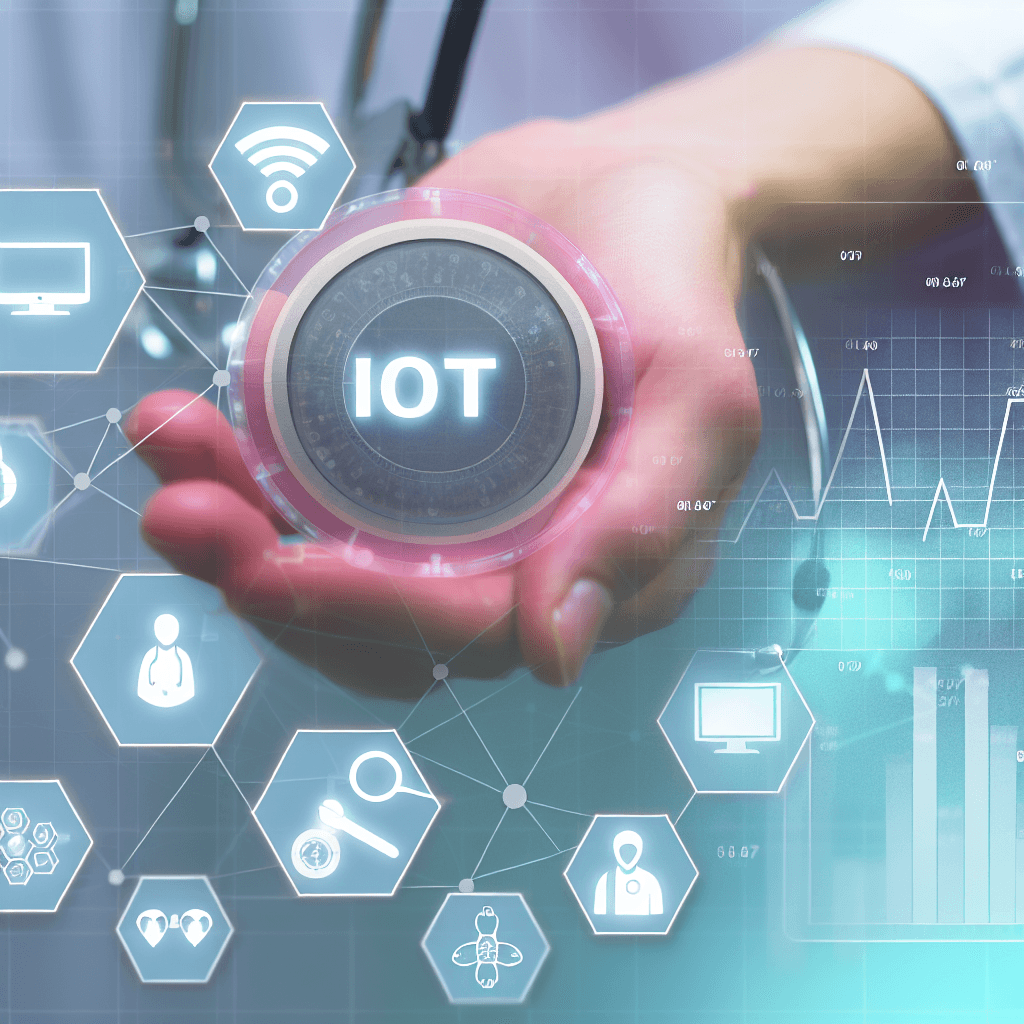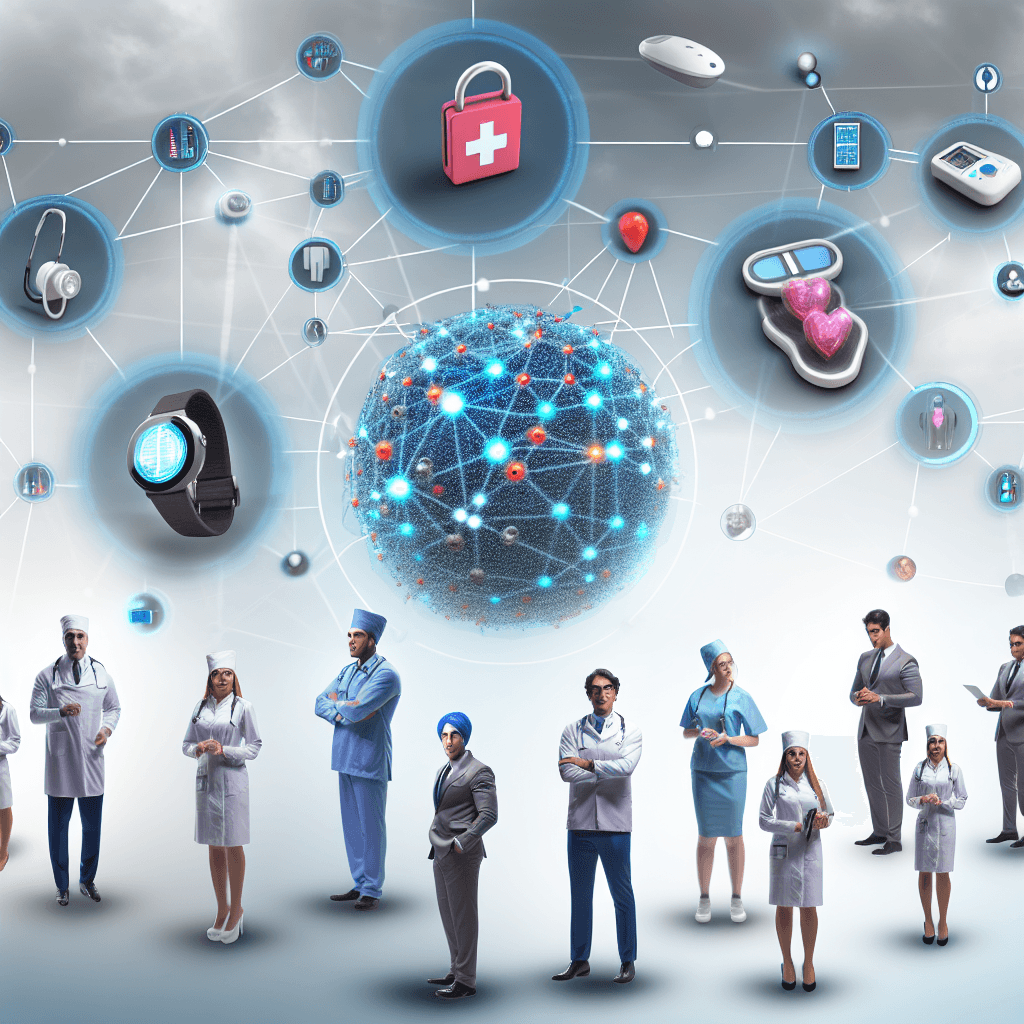Explore the IoT in Healthcare Market: trends, size, share, and forecasts. Unlock potential with key insights.
Internet of Things (IoT) in Healthcare Market Size, Share & Forecast

Table of Contents
Internet of Things (IoT) in Healthcare Market Size, Share & Forecast

The Internet of Things (IoT) is revolutionizing various industries with its capability to connect devices and enable data exchange. In healthcare, IoT technologies are particularly transformative, offering new ways to monitor, analyze, and enhance patient care. This article explores the current market size, share, and future forecasts of IoT in healthcare, providing insights into its applications, benefits, and challenges.
Understanding IoT in Healthcare
IoT in healthcare involves the integration of connected devices that gather and transmit health data. IoT devices in healthcare range from wearable fitness trackers to advanced medical devices like smart inhalers and connected insulin pumps. These devices collect vast amounts of data, which healthcare professionals can use to improve treatment outcomes and patient care.
Current Market Size and Share
The global IoT in healthcare market has shown significant growth over the past few years. According to a report by Grand View Research, the market was valued at approximately USD 147.1 billion in 2021 and is expected to grow at a compound annual growth rate (CAGR) of 28.6% from 2022 to 2030. This growth is driven by the increasing adoption of IoT solutions in healthcare settings, coupled with advancements in technology and the rising demand for cost-effective treatment and disease management solutions.
Market Drivers
- Increasing Prevalence of Chronic Diseases: The rise in chronic diseases like diabetes and heart disease has led to a greater need for continuous monitoring, which IoT devices can provide.
- Technological Advancements: Improvements in IoT technologies, including better sensors and more reliable connectivity options like 5G, are enhancing the effectiveness and adoption of IoT in healthcare.
- Government Initiatives: Many governments are implementing initiatives to promote the use of healthcare IT solutions, which indirectly supports the growth of IoT in the sector.
Key Applications of IoT in Healthcare
IoT technology in healthcare is applied in several innovative ways to enhance patient care and operational efficiency. Some of the key applications include:
- Remote Patient Monitoring: IoT devices enable healthcare providers to continuously monitor patients without the need for hospital visits, improving the management of chronic diseases.
- Wearable Technology: Devices such as fitness bands and smartwatches help individuals monitor their own health and fitness, providing data that can be used to tailor health and wellness programs.
- Asset Tracking: IoT solutions help healthcare facilities track the location and status of medical equipment, reducing operational costs and improving patient care.
Challenges in the IoT Healthcare Market
Despite its benefits, the integration of IoT in healthcare faces several challenges:
- Data Security and Privacy: The handling of sensitive health data raises significant concerns about privacy and security. Ensuring the protection of this data is crucial.
- Integration with Existing Systems: Integrating IoT solutions with existing healthcare systems can be complex and costly.
- Regulatory Compliance: IoT devices in healthcare must comply with stringent regulatory standards, which can be a barrier to entry for some providers.
Future Forecast and Trends
Looking ahead, the IoT in healthcare market is poised for substantial growth. Innovations such as AI integration and the development of more sophisticated devices are likely to drive further expansion. The market is also expected to benefit from increased healthcare spending globally, particularly in developing regions where healthcare infrastructure is improving.
Case Studies
Several case studies highlight the successful implementation of IoT in healthcare:
- Remote Patient Monitoring: A clinic in Sweden successfully implemented IoT devices for monitoring patients with heart conditions, significantly reducing hospital readmissions and improving patient outcomes.
- Smart Inhalers: A pharmaceutical company developed a smart inhaler that tracks usage and helps patients manage their asthma more effectively. This device has led to improved patient adherence to prescribed treatments.
Conclusion
The IoT in healthcare market is growing rapidly, driven by technological advancements, the increasing prevalence of chronic diseases, and the need for cost-effective treatment solutions. While challenges such as data security and integration complexities exist, the benefits of IoT in enhancing patient care and operational efficiency are clear. As the market continues to evolve, healthcare providers and patients alike can expect to see significant improvements in the way care is delivered and managed.
In conclusion, IoT in healthcare represents a promising frontier that is set to redefine healthcare standards globally. With continuous innovation and adherence to regulatory standards, the future of IoT in healthcare looks bright, promising enhanced care, improved health outcomes, and more efficient healthcare systems worldwide.








